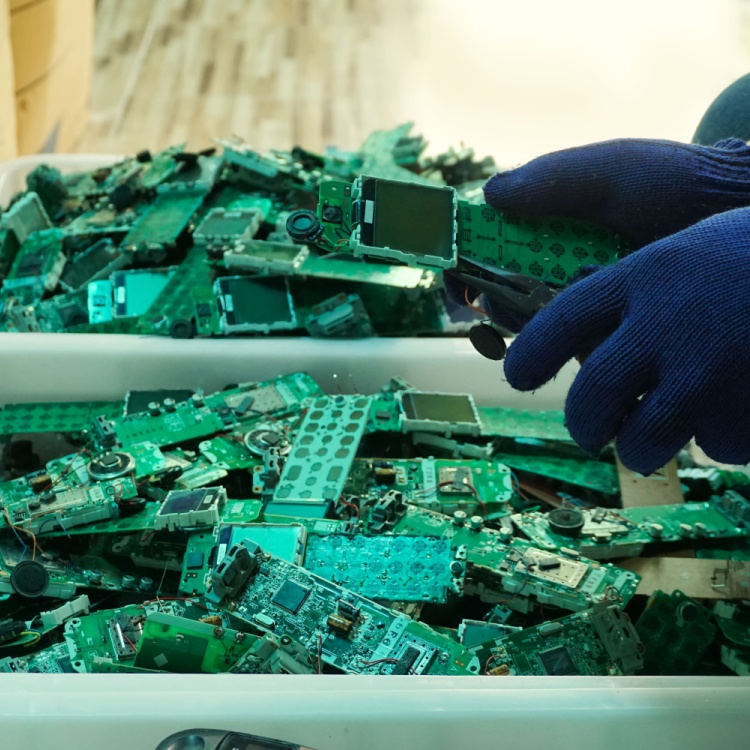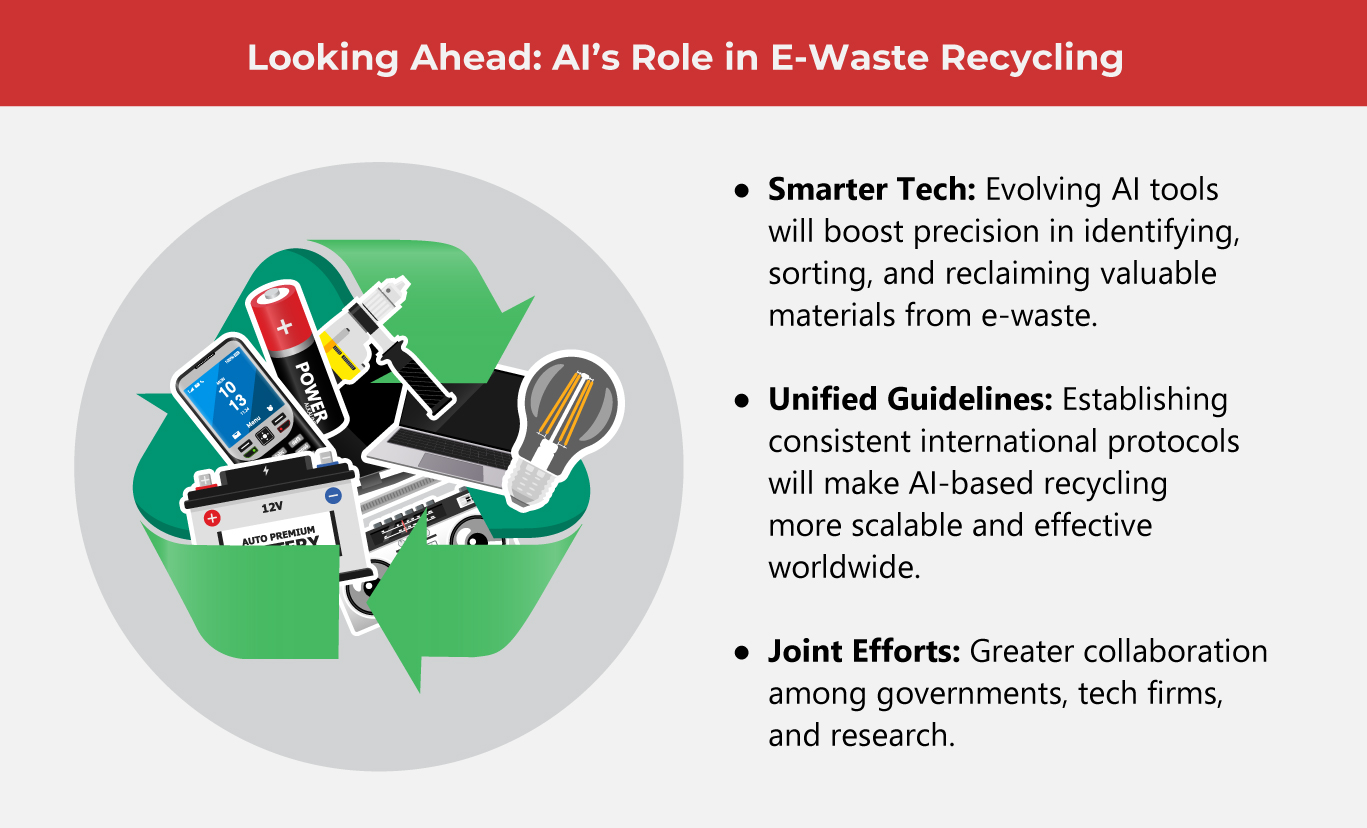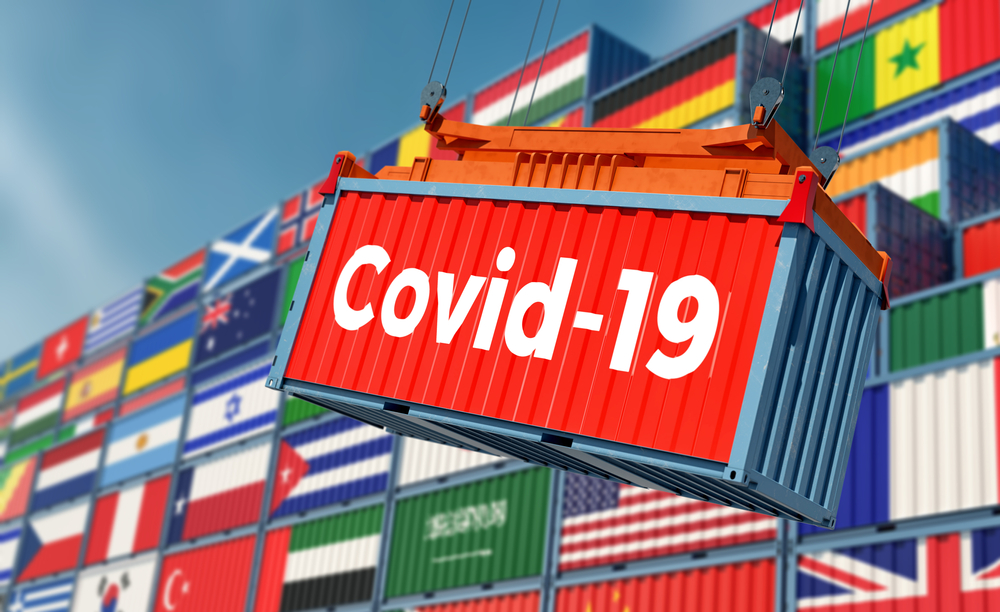E-Waste Is Growing: What AI Can Do

Electronic waste or e-waste is piling up fast, raising red flags across key environmental indicators such as pollution levels, landfill volume, and resource depletion. Artificial intelligence (AI) is tackling this growing issue, using smart systems to sort, process, and recover valuable materials more efficiently.
Private funding for generative AI (GenAI) soared from $3 billion in 2022 to $25 billion in 2023. Deloitte states that around 80% of private firms plan to rely on AI to drive their operations within the next three years. But staying competitive means constant hardware upgrades driving a surge in e-waste.
A recent study projects that the widespread use of large language models could generate 2.5 million tonnes of e-waste annually by 2030. This is because AI depends on heavy-duty hardware with real environmental costs.”
In 2022, the EU produced around five million tons of e-waste, while the U.S. generated between 6.9 and 7.6 million metric tons—roughly 46 to 47 pounds per person annually.
Additionally, electronic recycling today is inefficient and outdated. Most devices are built for low-cost production, making them hard to recycle and hindering sustainability efforts. The manual breakdown is slow and expensive while shredding—still a common practice—destroys many valuable parts, limiting the product life profile.
Data centers and the e-waste surge
The surge in AI adoption drives a growing demand for data centers, which require large and continuous amounts of electricity to function. These facilities, often powered by non-renewable energy, are emerging as major contributors to global carbon emissions.
Recent findings suggest AI-related energy use could soon represent 0.3% to 0.5% of global electricity consumption. The International Energy Agency warns that data centers already consume over 1% of global power—and with AI's rapid growth, that figure could double by 2026.
Water consumption is a growing issue for data centers, particularly in drought-prone regions like Goodyear, Arizona, where Microsoft uses over 50 million gallons of potable water annually.
To address this, some companies are testing unconventional solutions—such as Microsoft’s trial of a submerged data center off the coast of Scotland. These systems are in the test and system development stage, using seawater for cooling. The experiment has proven far more efficient, with significantly fewer hardware failures than traditional land-based centers.
E-waste, filled with hazardous metals and chemicals, poses serious environmental and health risks as it breaks down. According to the U.N., it's being generated at a rate five times faster than recycling efforts can keep up, highlighting the need for more test solutions.
6 ways AI can boost e-waste recycling
AI improves operational efficiency in e-waste recycling by improving material recovery and safe disposal of hazardous components through these methods.
-
Smart sorting technology
Sorting e-waste is complex due to the mix of materials in electronics. By using machine learning, computer vision, and smart sensors like X-ray Fluorescence (XRF) and infrared, AI systems can quickly conduct a material composition analysis, separating plastics, metals, and trace elements.
-
Material testing
AI enhances material efficiency by designing products with less materials and better recyclability. GenAI analyzes electronics' material use, promoting sustainability and reducing reliance on rare minerals like cobalt and lithium. It also forecasts waste composition and recommends optimal recycling methods.
-
Customer connection
Interactive kiosks educate users and offer incentives for proper disposal. By analyzing user behavior, AI tailors awareness campaigns to boost participation. A study by Theerthaana et al. (2025) showed a 30% increase in consumer involvement with AI kiosks.
-
Blockchain for improved transparency
Blockchain provides secure tracking by assigning unique identifiers to e-waste, ensuring transparency throughout the disposal and recycling process. Meanwhile, AI analyzes logistics for inefficiencies, optimizing operations. This combination provides manufacturing solutions, enhancing data integrity and streamlining recycling.
-
Sustainable product design & development
Recycling starts with smart design and product testing. AI simulates end-of-life scenarios to suggest recyclable designs. By 2030, AI could add up to $90 billion annually to the circular economy, making recycling more efficient, cost-effective, and attractive for manufacturers and businesses.
-
Advanced waste solutions
AI and the Internet of Things (IoT) are transforming e-waste management in industrial markets. Smart bins monitor fill levels and trigger timely pickups, while AI plans efficient collection routes to cut emissions. Meanwhile, AI-powered robots dismantle hazardous electronics and recover valuable parts with precision.
Other ways to address the e-waste crisis
Upgrading to more advanced chips should, in theory, reduce energy use and waste in server farms—but in reality, each upgrade adds to the growing e-waste stream. Trade restrictions further complicate access to cutting-edge semiconductors, especially for some countries, leading to greater waste.
One solution is downcycling: repurposing outdated servers for simpler tasks like website hosting or donating them to schools. This extends their lifespan and reduces waste.
While major tech companies, such as Amazon and Microsoft have set green energy and carbon reduction goals, experts argue that voluntary commitments aren’t enough. Policies and incentives may be necessary to ensure companies adopt responsible e-waste practices. Encouraging reuse, improving design and engineering, and enforcing sustainability standards are key to managing AI’s growing environmental footprint.
In Germany, researchers at the Fraunhofer Institute have created iDEAR—Intelligent Disassembly of Electronics for Remanufacturing and Recycling—to make electronic waste processing smarter and more precise.
E-waste analysis is thorough, employing AI-driven 3D cameras and optical sensors to examine various aspects of electronic waste. This system is capable of identifying detailed information such as serial numbers and evaluating the state of components, including screws, providing a comprehensive assessment of the items. This data feeds into a machine-learning model that classifies materials and guides robotic arms through carefully planned disassembly sequences. Meanwhile, a digital twin of each product is generated to map out its structure, enabling the robot to decide whether to fully or partially dismantle a device, depending on component value.
The iDEAR system has already demonstrated success by removing mainboards from PCs with high precision. Though currently focused on computer equipment, the technology is designed to scale, aiming to handle a broad range of consumer electronics and appliances. iDEAR represents a leap forward in reclaiming valuable materials and supporting a circular economy. AI is revolutionizing e-waste recycling but faces challenges like steep setup costs, reliance on quality data, and inconsistent regulations worldwide. Despite these barriers, its role is crucial. From smart sorting to transparent tracking, AI reshapes how electronics are recycled—offering a smarter, greener future built on efficiency, resource recovery, and reduced environmental harm.
AI is revolutionizing e-waste recycling but faces challenges like steep setup costs, reliance on quality data, and inconsistent regulations worldwide. Despite these barriers, its role is crucial. From smart sorting to transparent tracking, AI reshapes how electronics are recycled—offering a smarter, greener future built on efficiency, resource recovery, and reduced environmental harm.
 As one of the Top 20 EMS companies in the world, IMI has over 40 years of experience in providing electronics manufacturing and technology solutions.
As one of the Top 20 EMS companies in the world, IMI has over 40 years of experience in providing electronics manufacturing and technology solutions.
We are ready to support your business on a global scale.
Our proven technical expertise, worldwide reach, and vast experience in high-growth and emerging markets make us the ideal global manufacturing solutions partner.
Let's work together to build our future today.
Other Blog


